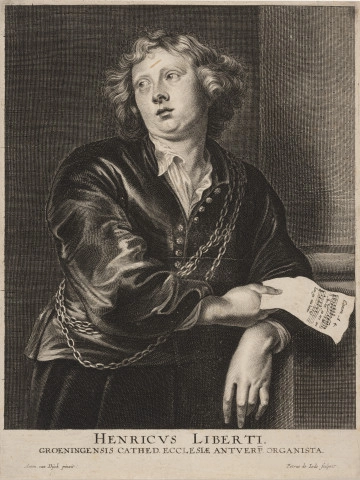
Portrait
circa 1632
National Museum in Szczecin
Part of the collection: Pyrzycka folk culture
The custom of women covering their heads, which is obligatory for married women, has a centuries-old tradition in Europe. The old term 'white-headed' originated directly from the ordinary wearing of white linen scarves tied in various ways by women.Another no less popular headdress was the bonnet worn by women of all social classes. They wore headscarves, which were cheaper and much more comfortable for everyday use. In folk culture, the bonnet was an attribute of a married woman, which she was given the privilege to wear on her wedding day. This moment was the climax of the wedding ceremony. The bride's hair was braided, symbolically or actually cut, and then a cap or a headscarf was placed on her head. Thus, the woman got incorporated into the circle of married women; she had social consented to the marriage and its consummation. Only in a few regions did maidens or even girls wear bonnets. That was the case in the Pyrzyce region. The caps and the ribbons on them were blue, while girls often had coloured ribbons on the back of the cap. Young married women could wear bluebonnets, while black ones were reserved for married women. This cap belonged to a married woman and was a typical part of her outfit. The head is shallow, revealing hair and forehead, clearly rounded at the ears, the bottom is small and square. It was made of three layers: a dark linen fabric, a middle layer of thinly leathered leather and linen, white canvas. The outside was entirely covered with a ribbon of silk taffeta, and the satin ribbon was used to tie under the chin and make a large bow at the back.
Iwona Karwowska
Author / creator
Dimensions
cały obiekt: height: 18 cm, width: 19 cm
Object type
folk costume
Creation time / dating
Creation / finding place
Identification number
Location / status

Dyck, Anthony van
circa 1632
National Museum in Szczecin

unknown
1965
National Museum in Szczecin

unknown
1890 — 1910
National Museum in Szczecin
DISCOVER this TOPIC
Castle Museum in Łańcut
DISCOVER this PATH
Educational path
0/500

We use cookies to make it easier for you to use our website and for statistical purposes. You can manage cookies by changing the settings of your web browser. More information in the Privacy Policy.
We use cookies to make it easier for you to use our website and for statistical purposes. You can manage cookies by changing the settings of your web browser. More information in the Privacy Policy.
Manage cookies:
This type of cookies is necessary for the website to function. You can change your browser settings to block them, but then the website will not work properly.
WYMAGANE
They are used to measure user engagement and generate statistics about the website to better understand how it is used. If you block this type of cookies, we will not be able to collect information about the use of the website and we will not be able to monitor its performance.